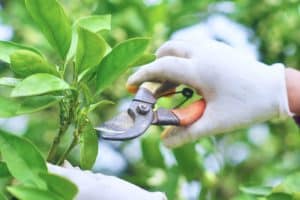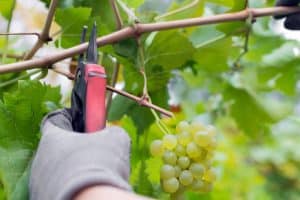Backyards are more than just a place to mow the lawn. They’re like little green lungs for your neighbourhoods, helping everything around breathe easy. But the whole snip-happy approach to gardening, where you try to control every leaf and branch, can actually mess with the awesome wildlife that calls our yards home. Here’s why taking a more relaxed approach – minimal pruning – is a top move for both your garden and the environment.
What is minimal pruning and how does it differ from traditional practices?
Think of traditional pruning as that yearly haircut you dread. You know, the one where the stylist chops off a ton of hair. Minimal pruning, on the other hand, is like a quick trim at home. Just snip off the dead ends, the funky stuff, and anything getting a little too crowded. This lets your plants keep their natural shape and creates a way cooler habitat for all sorts of creatures.
How does minimal pruning benefit wildlife habitats?
By leaving more branches and leaves hanging around, they basically turn your yard into a wildlife resort. Here’s how:
- Fancy apartments: Birds love thick foliage to build nests and hide from hungry cats (or the neighbour’s kid with a water pistol). It means there are heaps of these fancy bird apartments for them to choose from.
- All-you-can-eat buffet: Insects, which are happy hour snacks for many birds, love the diverse plant life that thrives with minimal pruning. This, in turn, means more birds visiting your garden for a feed.
- Winter wonderland: Lots of insects and fuzzy friends like to hibernate amongst fallen leaves and woody bits and bobs. Light pruning lets this natural layer build up, creating the perfect winter sleepover spot for these little dudes.
Minimal pruning is a core principle of wildlife habitat gardening, as it allows plants to retain their natural structure, creating the perfect haven for a variety of creatures.
How does minimal pruning improve plant health and diversity?
Light pruning isn’t just about helping out the creepy-crawlies and feathered friends. It’s great for your plants too! Here’s why:
- Less stress, more success: Chopping away at your plants all the time can be pretty stressful for them, making them more likely to catch nasties. It lets them focus their energy on growing strong and healthy.
- Deep-rooted champions: When plants have more leaves to work with, they can make more food through photosynthesis. This translates to beefier root systems that help them handle dry spells and other challenges like a boss.
- Pollinator paradise: A diverse garden with all sorts of plant structures is an open invitation for pollinators like bees and butterflies. This kickstarts a super cool cycle where they help your plants reproduce, and your plants provide them with yummy nectar. It’s a win-win for everyone!
It’s important to remember that different trees require unique pruning techniques. While light pruning is a great approach for many, some trees benefit from more specific cuts to maintain their health and shape. Researching the specific needs of your trees before pruning will ensure you’re giving them the best possible care.
Are there any drawbacks to minimal pruning?
Minimal trimming is great, but don’t let your veggie garden become a wild west show! Here’s the thing:
- Fruit & veggie focus: If you’re growing yummy things to eat, you might still need to do some strategic pruning to get the best harvest.
- Wild look, wild love: A minimally pruned garden might not look like a perfectly manicured lawn from a magazine. But the natural beauty and all the extra wildlife will make your yard way more interesting!
How can minimal pruning practices be implemented in your own yard?
Making the switch to minimal pruning is easier than you might think! Here are some tips to get you started:
- Target the troublemakers: Focus on removing only dead, diseased, or branches that are getting a bit too close for comfort.
- Plant power: Learn a bit about the natural way your plants grow. This will help you figure out what minimal pruning looks like for each one.
- Leaf it alone: Let fallen leaves decompose naturally. This creates a nutrient-rich blanket for your soil and keeps those winter-loving critters cosy.
- Start slow: If you’re used to going shears-happy, ease into it. Take away a bit less each time and see how your plants respond.
Conclusion
Light pruning is basically a superhero move for your garden and the environment. It creates a thriving habitat for wildlife, keeps your plants healthy, and saves you some effort on the gardening front.
While minimal pruning is fantastic for many plants, there are times when tree pruning for a healthy ecosystem might be necessary. This could involve removing diseased branches that could spread to other trees or carefully shaping a young tree to encourage strong, healthy growth. So, forget the intense pruning sessions, embrace the natural beauty, and watch your backyard transform into a little slice of ecological paradise!
Get your garden buzzing!
Inspired to ditch the shears and create a backyard haven for your local wildlife? We get it! But hey, not everyone’s a pruning pro. If the thought of tackling your trees makes you itch, The Yard is here to help!
We offer expert tree pruning services that focus on keeping your trees healthy and happy, while still respecting their natural form. This means a healthier ecosystem for your backyard and less work for you. Win-win!
Ready to give your trees (and yourself) a break? Contact The Yard for eco-friendly gardening advice. We can help you create a backyard that’s buzzing with life, one strategically placed snip at a time.



